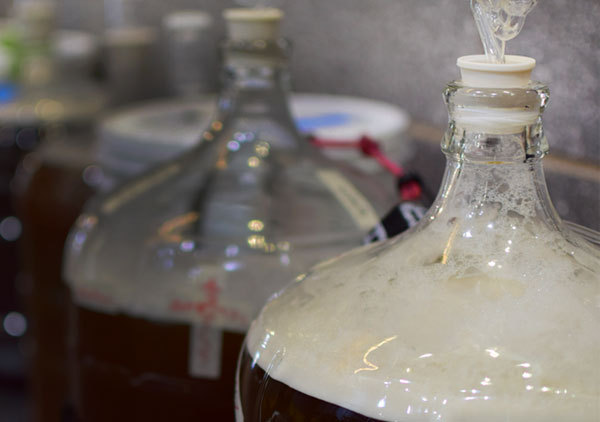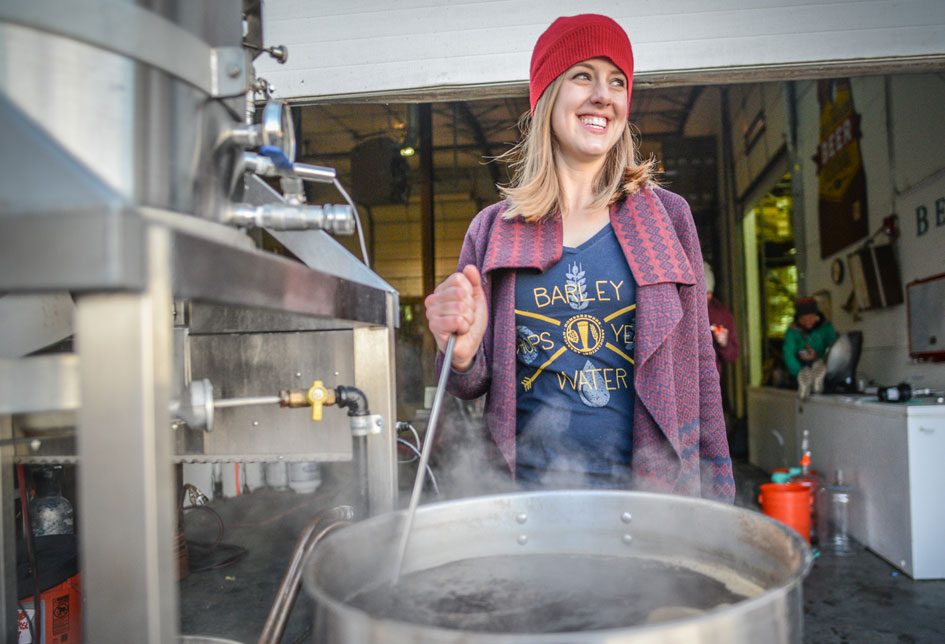
Put your knowledge of fermentation to the test in this week’s Tuesday Beer Trivia quiz.
Some historians believe that civilization developed from a desire to drink beer. Ancient brewers and winemakers relied on natural yeast sources to inoculate their fermentations, and for most of history, fermentation was a divine mystery, with the froth on the surface of the beer called “godisgood.”
Today, we have a much better understanding of fermentation, and applying that knowledge to your homebrew can make a world of difference in the finished product.
After you take the Beer Trivia quiz below, scroll down to “Beer Trivia Answer Explanations” section to learn more about yeast!
[polldaddy type=”iframe” survey=”DF5C70AAD4F357A4″ height=”auto” domain=”2491351″ id=”beer-trivia-fermentaiton”]
Beer Trivia Answer Explanations
Click To Expand
Question 1: Fermentation is the process whereby sugars are converted by yeast into alcohol, carbon dioxide and heat. During fermentation, a mixture of alcohol, water and CO2 has less internal energy than the mixture of sugar and water from which it is derived. Much of that energy is released as heat.
Question 2: Nitrogen requirements for wort are usually measured in terms of free amino nitrogen (FAN); for a wort of specific gravity 1.040 (10° Plato) a typical FAN level would be about 150 mg/l. The relative level of sugars and nitrogenous materials is profoundly influenced by the conditions of mashing and, to a lesser extent, wort boiling. Lower temperatures during mashing favor protein breakdown and, therefore, increases in FAN levels. On the other hand, higher mash temperatures reduce proteolysis but increase the activity of amylase enzymes, leading to an increase in fermentable sugars.
Question 3: Management of the fermentation process is dependent on a number of factors, including the composition and oxygen content of the wort, the quality and quantity of the yeast used for pitching, temperature control in the fermenter, time, and the fermenter design.
Question 4: The fermentation temperature is critical in controlling the outcome of fermentation and has a significant impact on the development of flavor. Ales are generally fermented in the temperature range of 61-72°F (16-22°C) using top-fermenting strains, whereas lagers are fermented much cooler, 48-57°F (9-14°C), using bottom-fermenting strains. Some beers, particularly Belgian styles, may be fermented very warm, with temperatures reaching almost 90°F (32°C).
Question 5: Yeast are not strictly anaerobic; they need oxygen for reproduction. Although many brewers and homebrewers are terrified of oxidizing their beer, they all know yeast requires oxygen to have a healthy and consistent fermentation. There are a few ways to introduce oxygen into the wort before adding yeast (aerating, direct oxygen, etc.). Introducing proper levels of dissolved oxygen is just as important as using proper pitching rates. Lack of dissolved oxygen causes many fermentation problems (stuck fermentation, long fermentation times, under-attenuated beers, yeast stress. For the average wort and yeast pitching rates, the proper amount of dissolved oxygen is 8 to 10 parts per million. High-gravity wort requires more yeast and therefore, more oxygen.
Sources:
- Yeast, by Chris White with Jamil Zainasheff
- The Oxford Companion to Beer by Garrett Oliver




Share Post